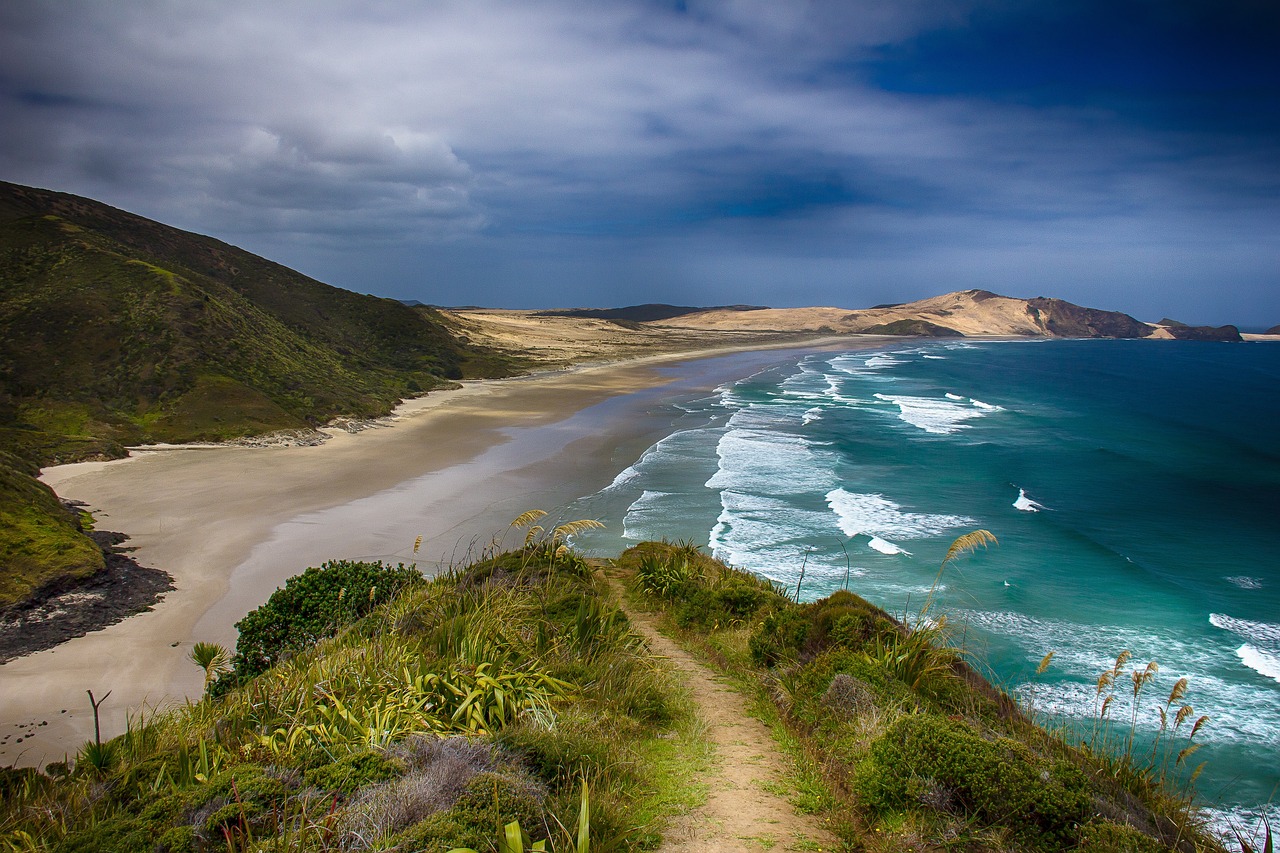
Olfactory Borders: How Rising Seas Are Rewriting the Scent of Coastal Landscapes
By Gayil Nalls
Sign up for our monthly newsletter!
T here is sheer, wordless pleasure in standing on a sea cliff and breathing in the mingled scents of salt spray and sun-warmed aromatic plants—thyme, gorse, or pine—each note carried on the wind like a secret from the land. The sharpness of the ocean air deepens their fragrance, awakening something primal and deeply alive within.
I recently had a moment to walk the beginning of the aromatic cliffs of Bray Head in Ireland. Bray Head rises dramatically above the Irish Sea, its rugged cliffs and sloping meadows offering one of Ireland’s most iconic coastal walks. Located on the eastern edge of County Wicklow, this windswept promontory is not only a place of natural beauty and panoramic views—it is also home to a remarkable community of aromatic plants that thrive in the salt-spray air and shallow, stony soils. This Spring, one plant was red valerian (Centranthus ruber), which was providing nectar to large wild bees it had called with its heavy aroma.
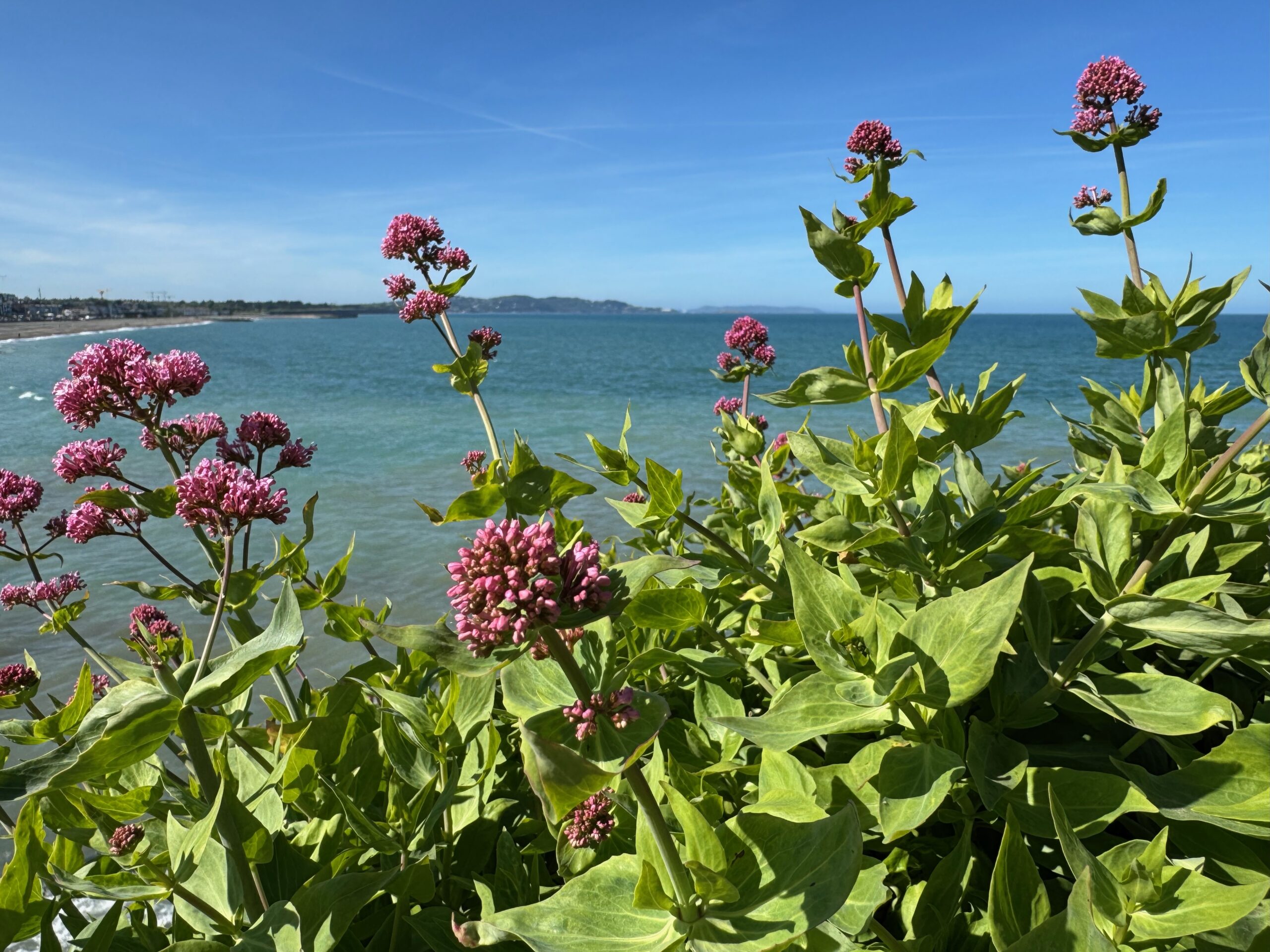
When I walked the cliff path years ago, I was enveloped by the scent of gorse (Ulex europaeus), a sun-loving shrub whose bright yellow flowers emit a warm, coconut-like fragrance. Gorse seemed more dominant in the landscape in my memory, and its resilience to wind and poor soil makes it a signature plant of Bray Head’s coastal heath. But this time it was spring and there was so much more in bloom. These plants form what could be called an aerobiome of the edge—a living, aromatic ecology shaped by salt air, wind, and seasonal shifts. The smells that rise from Bray Head’s cliffs are not just pleasing—they are cues of ecological resilience and deep cultural memory. Ancient peoples who moved through this landscape would have known these scents well, as signals of place, time, and nourishment.
Along the margins of land and sea, in many places, a quiet transformation is underway. The smell of the coast—once a mingling of salt spray, wild herbs, and flowering shrubs—is changing. As climate change intensifies, sea level rise and increased salinity are reshaping coastal ecosystems and, with them, the scent profiles of the aromatic plants rooted there. This subtle yet profound shift in the olfactory landscape is an overlooked indicator of ecological stress, cultural loss, and botanical adaptation.
Coastal regions are home to unique aromatic flora adapted to briny winds, sandy soils, and fluctuating moisture. In Mediterranean garrigue, Irish machair, Californian chaparral, and the windswept dunes of the Baltic, native plants like Rosmarinus officinalis (rosemary), Helichrysum italicum (immortelle), Crithmum maritimum (rock samphire), Artemisia maritima (sea wormwood), and Armeria maritima (sea thrift) thrive in marginal soils, many drawing their intense scent from the stress of survival.
These stressors—drought, salt spray, and high UV exposure—trigger the production of essential oils that protect plants from dehydration, herbivory, and fungal attack. The resulting compounds are not only pharmacologically potent but also deeply evocative of place.
However, with the rising tides, this dynamic balance is being thrown off.
Salinity is a big force, and changes in salinity intrusion are among the most insidious impacts of sea level rise. As saltwater moves inland, it alters soil chemistry and damages root systems. Some halophytic (salt-tolerant) species, like Salicornia or Limonium, may thrive or expand their ranges, while others, like lavender and thyme, exhibit reduced vigor and changes in volatile oil composition. The salt stress doesn’t just stunt growth, it alters the biochemistry of the plant. Science is showing that it can both increase or suppress the production of certain aromatic compounds depending on the severity of stress and the species in question.
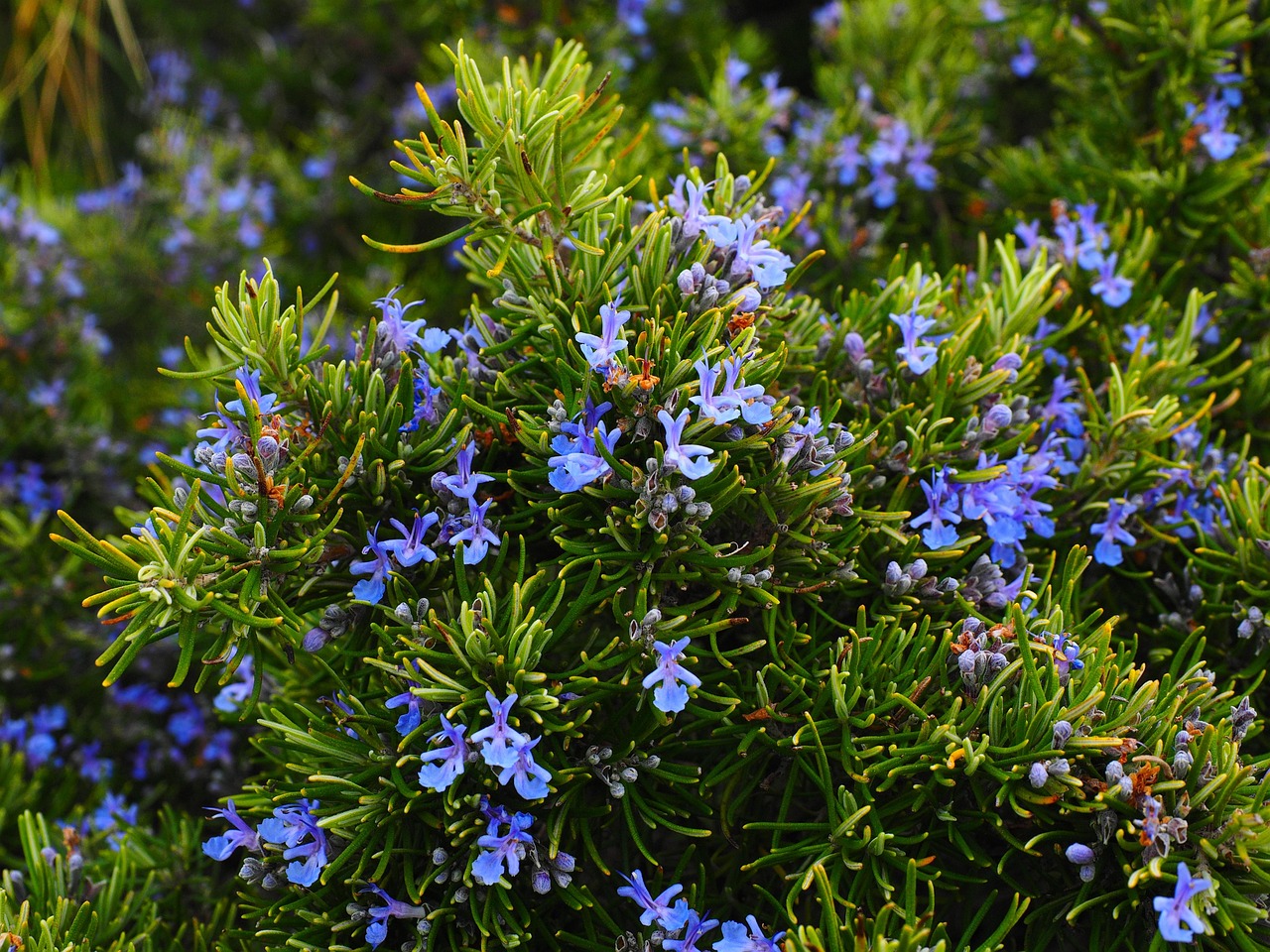
In rosemary (Rosmarinus officinalis), for example, moderate salt stress can elevate levels of carnosic acid and essential oil production, intensifying the herb’s signature scent. Yet as salinity becomes chronic or extreme, oil yields drop, and plants can wither or die.
Coastal squeeze, the trapping of plant habitats between rising seas and human development, further endangers aromatic species. Unable to migrate inland due to roads, seawalls, or urban sprawl, these plants face localized extinction. In southern England, native sea lavender and sea wormwood are losing ground. In the eastern U.S., salt marshes are expanding, displacing sweet-scented meadowlands.
Species migration may lead to hybridization and altered plant chemotypes. This creates new scent profiles but threatens the continuity of culturally and medicinally important varieties. For communities that rely on traditional plant knowledge, such as coastal foragers in Brittany or Crete, these changes are more than botanical; they erode identity.
Changing scents means changing memory. Scent is among the most powerful triggers of memory and place attachment. As the composition of coastal flora shifts, so too do the olfactory cues tied to home, seasonality, and ritual. The familiar fragrance of immortelle in Corsica, or wild thyme on Greek islands, may grow faint or vanish, replaced by less fragrant invaders or salt-tolerant species with pungent or unfamiliar aromas.
From a neuroaesthetic perspective, in many cases, these changes may dull the affective power of landscape, weakening emotional bonds with coastal environments.
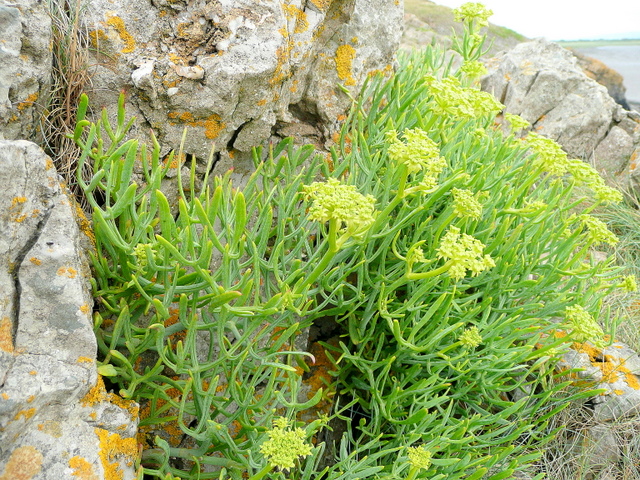
Not all news is grim. Some plants are demonstrating remarkable resilience and signs of adaptation. Crithmum maritimum (rock samphire), long used in coastal cuisines and perfumery, is thriving in some newly saline zones. Its essential oils, rich in limonene and dillapiole, are gaining renewed attention for antimicrobial and anti-inflammatory properties.
Researchers are also exploring the cultivation of salt-tolerant aromatic plants as climate-resilient crops. Some projects aim to stabilize coastal soils, restore dunes, and preserve olfactory heritage while developing niche perfumes and herbal medicines. There is a growing interest in leveraging such plants for coastal restoration and climate resilience. This aligns with broader European efforts to utilize halophytes—plants that thrive in saline conditions—for environmental and economic benefits.
For instance, the EU-funded Aquacombine project explores the potential of halophytes in sustainable agriculture and coastal restoration, highlighting their role in stabilizing soils.
Additionally, the Saltmarsh Habitat Restoration Handbook provides practical guidance on restoring saltmarsh habitats across the UK and Ireland, emphasizing the importance of such ecosystems in coastal defense and biodiversity. While the handbook doesn’t focus exclusively on aromatic plants, the restoration of these habitats could create favorable conditions for cultivating salt-tolerant aromatic species.
Incorporating salt-tolerant aromatic plants into coastal restoration efforts not only aids in stabilizing soils and combating erosion but also offers opportunities for developing products like natural niche perfumes and herbal medicines. This approach supports both environmental sustainability and local economies, preserving the olfactory heritage of coastal communities.
Toward an Olfactory Conservation Ethic
To protect coastal aromatic plants, World Sensorium Conservancy is calling for an “olfactory conservation ethic”—an approach that recognizes scent as part of ecological and cultural heritage. Efforts for coastlines include:
Encouraging countries and communities to map scent loss through science, citizen science and traditional ecological knowledge
Supporting dune restoration and managed retreat zones to give plants room to migrate
Preserving chemotype diversity of aromatic species through seed banking and cultivation
Documenting traditional uses of coastal aromatics in cuisine, medicine, and cultural practices.
Our coastal margins are more than physical boundaries—they are sensorial frontiers. As sea levels rise, what lingers in the air reminds us that climate change is not only changing landscapes, but also altering and erasing the invisible, fragrant threads that connect people to place.
Gayil Nalls, PhD is an interdisciplinary artist and theorist. She is the founder of the World Sensorium Conservancy and the editor of its journal, Plantings.
Top photo: pixabay.com, photo by holgerheinze0
Selected Sources
Tattini, M., et al. (2015). “Physiological and molecular responses of plants to salt stress.” Plant and Soil, 381(1–2), 1–17.
Rozema, J., & Flowers, T. J. (2008). “Ecophysiology of coastal halophytes.” Annals of Botany, 101(3), 341–353.
IPCC (2021). Sixth Assessment Report. Chapter 2: Terrestrial and freshwater ecosystems and their services.
Barbero, F., et al. (2010). “Volatile Emission in Mediterranean Plants in Response to Environmental Stress.” Natural Product Communications, 5(10), 1675–1680.
Classen, C., et al. (1994). Aroma: The Cultural History
Sánchez, E., García, S., & Contreras, J. A. (2010). Influence of salt stress on phenolic compounds and essential oil composition of rosemary (Rosmarinus officinalis L.). Journal of Agricultural and Food Chemistry, 58(1), 114–120. https://doi.org/10.1021/jf902596j
Swamy Gowda, M. R., Hirtemath, C., Singh, S., & Verma, R. S. (2022). The influence of NaCl salt stress on the yield and quality of the essential oil from two varieties of rose-scented geranium (Pelargonium graveolens L’Hér.). Biochemical Systematics and Ecology, 105, 104532. https://doi.org/10.1016/j.bse.2022.104532
Ben Taarit, M., Msaada, K., Hosni, K., Hammami, M., Kchouk, M. E., & Marzouk, B. (2009). Plant growth, essential oil yield and composition of sage (Salvia officinalis L.) fruits cultivated under salt stress conditions. Industrial Crops and Products, 30(3), 333–337. https://doi.org/10.1016/j.indcrop.2009.06.007
Plantings
Issue 48 – June 2025
Also in this issue:

The Human and Ecological Costs of Perfume: A Call for a Social Ecological Perspective in the Fragrance Industry
By Nuri McBride
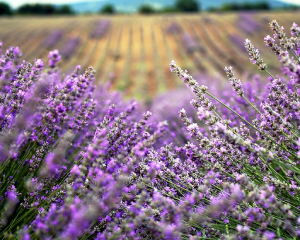
The Air We Breathe, the Life We Share
By Gayil Nalls
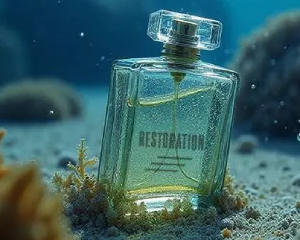
Algae ‘Perfume’ Fused with High-Tech Materials Holds Promise for Growing Coral
By Warren Cornwell
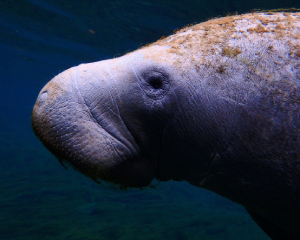
Manatees as Gardeners of the Amazon: The Ecological Role of Trichechus inunguis in Seed Dispersal, and Plant Diversity
By Gayil Nalls
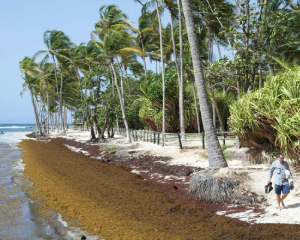
Sargassum is choking the Caribbean’s white sand beaches, fueling an economic and public health crisis
By Farah Nibbs
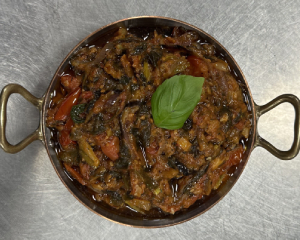
Eat More Plants Recipes:
Wakatouille
Wakamé Seaweed Ratatouille
By Chef Romain Delacretaz of La Table Marine, Nice, France
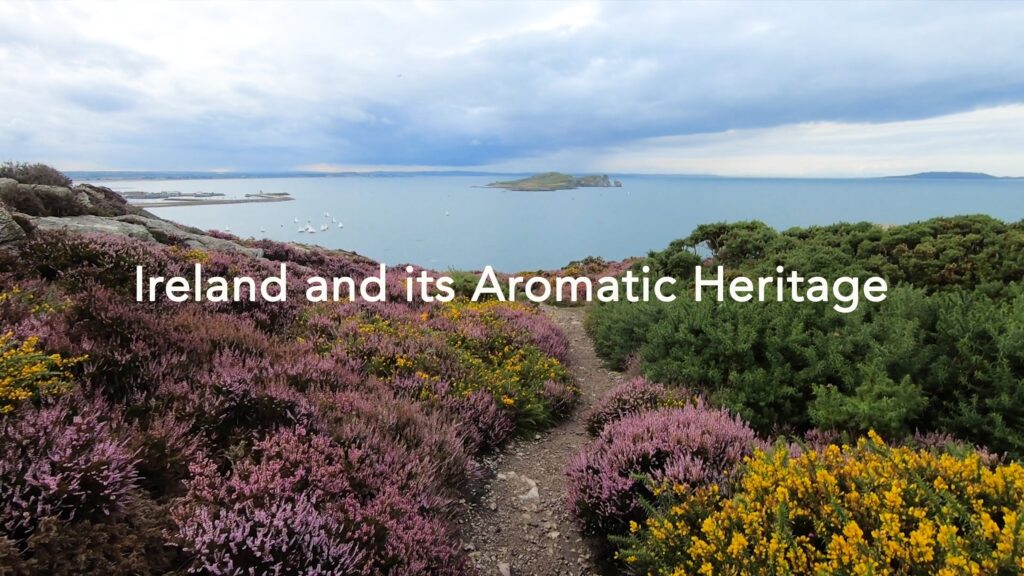
As Ireland transitions from the rich, smoky scent of peat-burning to a more sustainable future, its olfactory heritage is evolving. What will become the next iconic aromatic symbol of Ireland?
Click to watch the documentary trailer.

